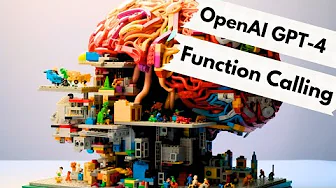Large language models (LLMs) have revolutionized the field of natural language processing, enabling human-like text generation, question answering, and more. But their capabilities go far beyond just generating fluent text. With function calling, LLMs can determine and execute specific functions based on the user’s input, bridging the gap between natural language and code execution.
What is Function Calling?
Function calling allows LLMs to not just generate text responses, but to return structured data responses, typically in JSON format. This structured data can then be used to trigger predefined functions – retrieving data, interacting with APIs, executing code, and more. It transforms LLMs from language models into interactive AI assistants capable of understanding natural language queries and taking real-world actions.
Benefits of Function Calling
- Natural Language to Code Bridge: Function calling seamlessly integrates natural language understanding with code execution, enabling users to request complex tasks using normal language.
- Enhanced Interactivity: LLMs can perform real-world tasks, streamlining workflows and providing personalized, context-aware experiences beyond just text generation.
- Flexibility: Developers can define custom functions tailored to their application’s needs, allowing LLMs to execute specialized tasks.
- API and Data Integration: LLMs can fetch live data from APIs, databases, and other sources based on the user’s input for up-to-date and relevant responses.
- Enterprise Utility: Function calling allows enterprises to directly leverage their data within LLMs without needing vector databases.
Example Use Cases
- An e-commerce assistant that helps customers search for products, check inventory, initiate purchases, and track orders.
- A personal productivity assistant that can schedule appointments, send emails, update to-do lists, and set reminders.
- A data analyst assistant capable of querying databases, generating visualizations, and surfacing key insights from natural language prompts.
- A customer support chatbot that can retrieve account details, diagnose issues, and kick off troubleshooting workflows.
The possibilities are vast across industries like retail, finance, healthcare, customer service and more. By combining LLMs’ language abilities with custom functions, we can create intelligent assistants that deeply understand user needs and take appropriate actions.
As models grow larger and smarter, function calling will be critical for unleashing their full potential – not just generating fluent text, but completing real-world tasks. It represents a major leap towards artificial general intelligence that can understand, reason, and directly apply its knowledge. The future of LLMs is interactive, capable and multifunctional – powered by the seamless integration of natural language with executable functions.




